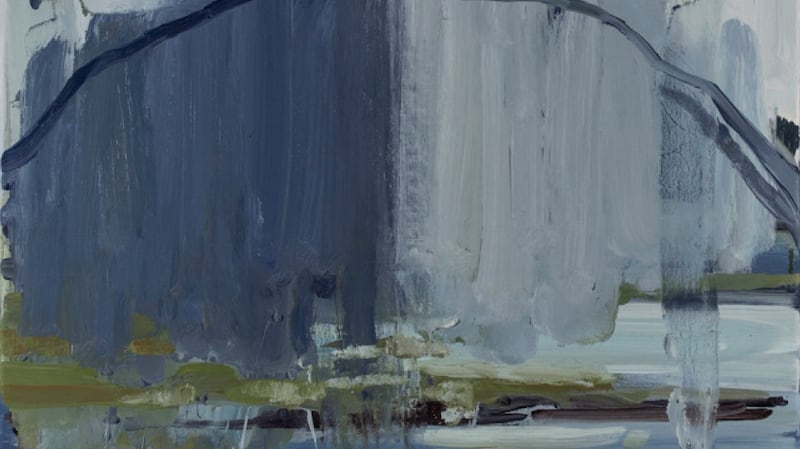Reports to an Academy – Ailbhe Ní Bhriain
RHA Gallagher Gallery, Dublin
****
Ailbhe Ní Bhriain's video installations typically pull the rug from under our feet. They often unfold across several screens, proceeding at a calm, even pace, and feature spaces that draw us in. But then, as we try to get a sense of what is going on, employing our fallback sense of superiority as jaded viewers, well used to reading all sorts of visual narratives, things don't go according to plan. Ní Bhriain will merge interiors with landscapes, water with land, sky with water, leaving us struggling to find our bearings.
The dream-like, in-between space that she creates recalls the eerie metaphysical paintings of Giorgio de Chirico in which the Italian piazza becomes a surreal, ambiguous arena, simultaneously both inside and out, stocked with resonantly symbolic motifs. Normal rules of scale and logic don’t apply. Similarly, Ní Bhriain’s invented world has the fluidity of a dream. Nothing is fixed, everything merges.
Reports to an Academy uses four screens and draws on four locations: the Natural History Museum on Merrion Square, the Aran Islands, plus deserted art school studios and library archives. There is often a stage-set quality to Ní Bhriain's settings, a sense of spaces being deconstructed and reconstructed before our eyes.

Animals, especially birds, turn up as watchful presences. In the past we might suddenly see fish swim by in what we had assumed to be a domestic interior. Here the screen is bisected by a tidal line, as though, like in JG Ballard's The Drowned World, the Earth has been overtaken by environmental disaster.
Ní Bhriain's title alludes to the Kafka story A Report of an Academy, in which an ape gives an account of his experience of becoming as human as possible to survive among humans. Weighing his options in captivity, he concludes: "I was quick to realise that there were two possibilities open to me: zoo or variety theatre. I didn't hesitate. I told myself: do everything in your power to get into the variety theatre."
Is the academy, the establishment and convention our variety theatre? Could we unmoor identity, set it adrift and see where we find ourselves? That seems to be where Ní Bhriain is leading us. Kafka's ape has a female companion, but: "By day, I have no desire to see her; she has the perplexity of the trained wild animal in her eye; I alone recognise that, and it is unbearable to me." Until December 20th, rhagallery.ie
Thin Places – New paintings by Pat Harris
Taylor Galleries, Dublin
****
Pat Harris refers to the idea of "thin places" in the Irish landscape. It's usually a mystically charged term referring to Celtic or pre-Celtic locations "where a person experiences only a very thin divide between past, present and future times", as writer Edward Sellner puts it. More generally, a thin place is a threshold between the everyday world and an otherworld or underworld. For Harris it's a means of approach to his paintings of Sruwaddacon Bay on the north Mayo coast, as well as other coastal locations. That odd sensation of touching an "ancient reality" within the present moment is enhanced in such pared-down, elemental settings, which seem both timelessly unchanging yet constantly reinvented with each new day.
Although he has been based in Belgium for many years, Harris has retained strong links with Ireland, and it is as if his time in mainland Europe has strengthened his identification with the western seaboard, accentuating an awareness of the vastness of the Atlantic, of being at the very edge of Europe. At the same time he has absorbed some European influence in his painting, responding in his own way to the elusive, tenuous echo of presence characteristic of Luc Tuymans's paintings, for example.
Giacometti has also been important, especially when Harris was best known as a figurative painter. More recently, still life and, especially, landscape have predominated. His recent landscapes are muted in colour and tone, and gesturally spare. Yet they have a concentrated, physical impact. One can feel the thickness of the empty space, the air itself, in the damp blankets of mist that veil sea stacks and ocean. Audaciously, he renders a stack or an island half definitely there and half enveloped by rain, capturing a shift in time in a single image. The term "thin place" is most appropriate here, where the solidity of the scene verges on fading to a hazy memory from the deep past. Until December 12th, taylorgalleries.ie
Neo Pentimenti – Sean Molloy
Ashford Gallery, RHA Gallagher Gallery, Dublin
***
Images have never been more ubiquitous, or more unstable, prey to limitless manipulation and distortion. That applies to digital imagery, at any rate. But what of painting, where, presumably, there is one authentic original that is indisputably itself? If you delve into the history of paintings, however, you quickly arrive at the issue of the original and the copy. So many artists produced multiple copies of signature works that the idea of the one, true original has always been problematic.
In Neo Pentimenti, Sean Molloy considers the status of painting in the digital era, but he does not tackle the original-copy question. He is more interested in looking at the question of changes to an original dictated by outside forces such as fashion or religious or political censorship. And he is interested in the destabilised state of the contemporary digital image.
He adeptly recreates a number of sections of European baroque paintings and introduces into the analogue technique of oil painting some typical digital interruptions, such as pixilation and incongruous bars of colour. Technically the work is beautifully made, but it does not really get to grips with its stated concern on "the relevance of paintings in the digitally mediated world". David Hockney, for example, an early adapter, has broached the question in an entirely different and innovative way. Until December 20th, rhagallery.ie












